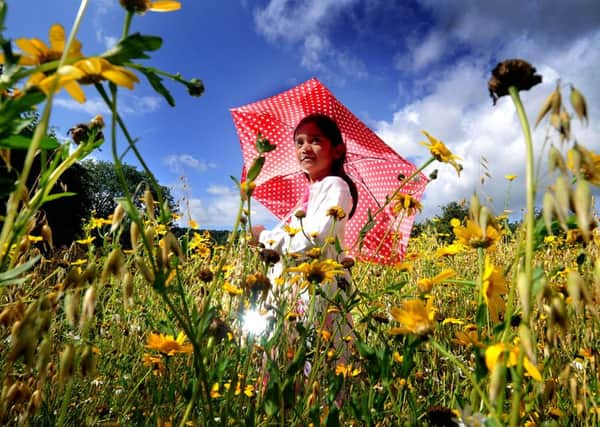Putting the colour back into the Yorkshire cornfields


More than half a century ago cornfields would have been ablaze with colour at this time of the year, with the red of poppies glowing against cornflower blue, corn marigold yellow and corncockle pink.
Now, in many areas the drift of poppies is the only reminder of the kaleidoscope of colour which once existed.
Advertisement
Hide AdAdvertisement
Hide AdBut some Yorkshire cornfields –including this demonstration field at the Ryedale Folk Museum – continue to bloom, thanks to the work of a unique initiative run from a remote corner of the North York Moors National Park.
Now in its 16th year, the Cornfield Flowers Project is reviving species of flowers that were common on arable land before the advent of weedkillers and re-introducing them to farms in East and North Yorkshire.
Visitors to Ryedale Folk Museum can see two “critically endangered” flowers blooming in the cornfield, which were rescued from the brink of oblivion.
Around half a century ago, the corn buttercup (Ranunculus arvensis) was a common “weed”.
Advertisement
Hide AdAdvertisement
Hide AdBut in the 1970s it was thought to have completely vanished. It was rediscovered near the village of Faceby in 1991, then disappeared before being found in a field of sugar beet at Marton, Kirbymoorside.
The museum’s project officer, Tom Normandale, said: “It was just half a plant, cut through by a plough, but we managed to gather 32 seeds and they were given out to volunteers the following year.
“But since then we have never found it in the wild again.”
Shepherd’s needle (Scandix pecten-veneris) was considered extinct in Yorkshire two decades ago. Yet it is flourishing at the folk museum and other sites.Key to the success of the project are the volunteers – gardeners, allotment holders and schools – who grow on the seeds and the farmers who create the right conditions for the plants to flourish on their land.
The 14 farmers involved in the project maintain headlands round their crops, strips 3m to 6m wide, which they do not spray but plough each year.
Advertisement
Hide AdAdvertisement
Hide AdNo money exchanges hands, nor is there an exchange of contracts, with the farmers motivated by their interest in wildflowers and desire to maintain traditions.
“We work with the older generation, who maybe identify with the plants a bit more because they grew up with them,” said Mr Normandale.
“You don’t get as much success with the younger ones because their whole education and way of farming is very technological.
“That connection with wildflowers is being lost.”
However, those involved in the project can rest easy in the knowledge that dozens of species with uncertain futures, are now safe.
Advertisement
Hide AdAdvertisement
Hide AdThe cornfield will be harvested in the autumn with the seeds being donated to farms, gardens and landowners across the area.
The Cornfield Flowers Project is led by the Carstairs Countryside Trust, in partnership with Ryedale Folk Museum, North York Moors Association and the North York Moore National Authority.
For more information, visit: www.ryedalefolkmuseum.co.uk
FACTFILE
Herbicides were developed during the Second World War for potential use as biological weapons.
When the first commercial herbicide was released commercially in 1946 at the end of the War it triggered a revolution in agricultural output.
Advertisement
Hide AdAdvertisement
Hide Ad“We managed to produce four times as much food from the same area of land,” said Ryedale Folk Museum’s project officer Tom Normandale.
But it also meant that poppies, which had survived the Western Front in the First World War, and other flowers which had brought pageants of colour to the British countryside each year - as well as supporting a huge diversity of life from bees to native birds - were finally eradicated.